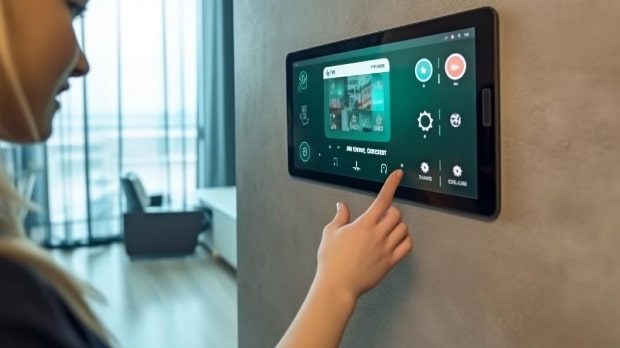The Evolution of Smart Home Devices and IoT

In today’s digitally-driven world, technology continues to weave its way into every aspect of our lives, making them more convenient, efficient, and interconnected. One area where this evolution is particularly evident is in the realm of smart home devices and the Internet of Things (IoT). From thermostats that learn our preferences to security cameras that keep watch over our homes, the possibilities seem endless. Let’s delve into the fascinating world of smart home devices and IoT, exploring their benefits, challenges, and what the future holds.
The Rise of Smart Home Devices
In recent years, smart home devices have experienced a meteoric rise in popularity, transforming traditional homes into interconnected hubs of automation and efficiency. Devices such as smart thermostats, lighting systems, and voice-controlled assistants have become commonplace, offering homeowners unprecedented control and convenience. Gone are the days of manually adjusting the thermostat or fumbling for light switches; now, a simple voice command or tap on a smartphone is all it takes to adjust settings and create the perfect ambiance.
Enhancing Convenience and Efficiency
One of the primary benefits of smart home devices is their ability to enhance convenience and efficiency in our daily lives. Imagine being able to preheat your oven on your way home from work or adjusting the lighting in your living room without leaving the comfort of your couch. With smart home technology, these scenarios are not only possible but increasingly accessible to the average homeowner. By automating routine tasks and providing remote access to home systems, smart devices give us greater flexibility and control over our environments.
Creating a Safer Home Environment
Beyond convenience, smart home devices also play a crucial role in enhancing home security and safety. From smart locks that allow for keyless entry to security cameras that provide real-time monitoring, these devices offer peace of mind and a sense of security. Additionally, smart smoke detectors and water leak sensors can alert homeowners to potential hazards, allowing for faster response times and potentially averting disasters. By leveraging the power of IoT, smart homes become safer and more resilient to unforeseen threats.
Challenges and Considerations
Despite their many benefits, smart home devices also present unique challenges and considerations. Privacy concerns, interoperability issues, and cybersecurity threats are among the most pressing issues facing the industry. As more devices become interconnected and share sensitive data, the risk of privacy breaches and hacking attempts increases. Additionally, ensuring compatibility and seamless integration between different devices and platforms remains a significant challenge for both manufacturers and consumers alike. Addressing these challenges will be essential to fostering trust and driving continued adoption of smart home technology.
The Future of Smart Home Technology
Looking ahead, the future of smart home technology promises even greater advancements and innovations. From AI-powered assistants that anticipate our needs to seamlessly integrated ecosystems of interconnected devices, the possibilities are limitless. As technology continues to evolve and become more sophisticated, smart homes will become increasingly autonomous and responsive to our preferences and habits. However, realizing this vision will require collaboration among industry stakeholders, policymakers, and consumers to address challenges and ensure that smart home technology remains accessible, secure, and user-friendly.
